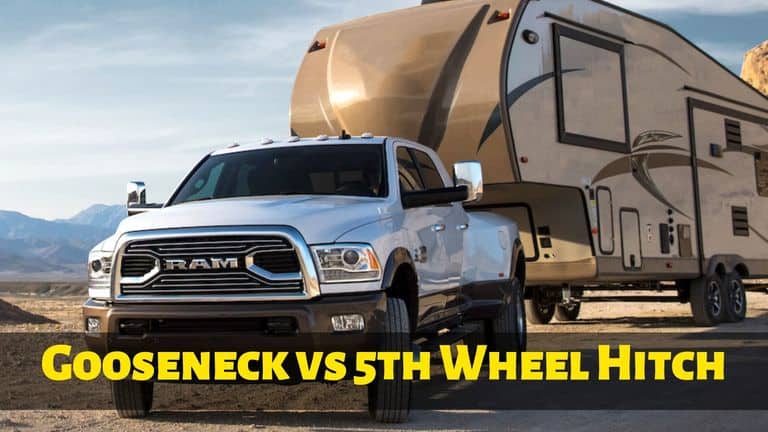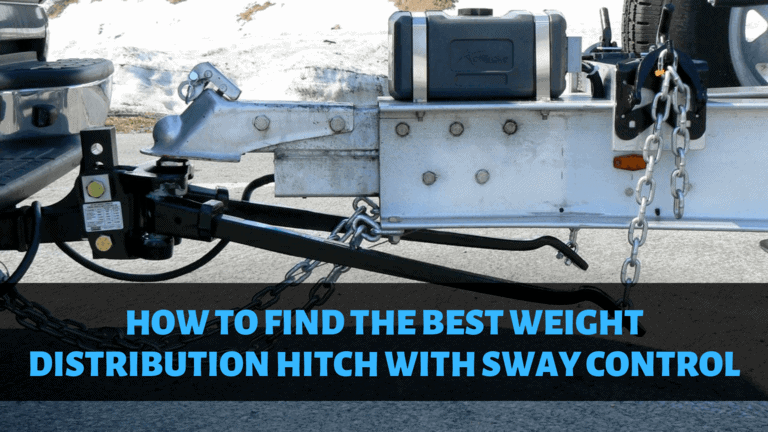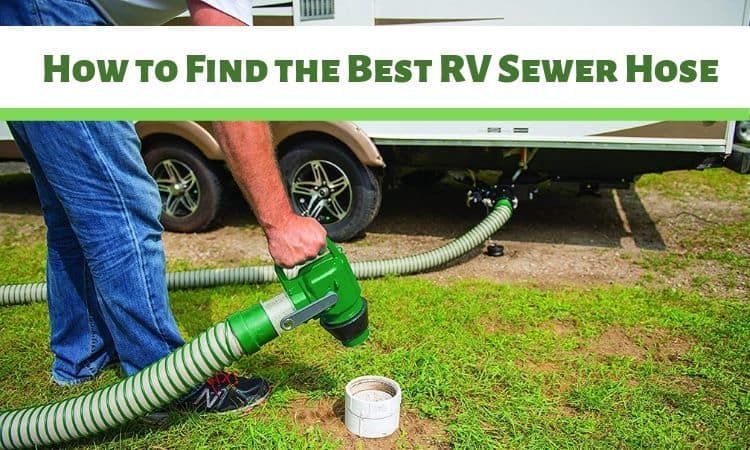How to Reset Service Trailer Brake
- How to Remove Carpet From Under RV Slide Out - November 13, 2021
- How to Reset Service Trailer Brake - November 7, 2021
One of the most important components of a successful RVing experience is knowing how to reset your service trailer brake. If you’re hauling an RV that weighs 5,000 plus pounds, it can be extremely difficult to stop when you need to without a good brake system.
It can even mean the difference between staying safe or getting involved in a car accident. In order to keep your brakes working the way they’re supposed to, it’s important to service them and reset them when necessary.
Lucky for us, your truck will usually send you an error message when your trailer brake needs to be reset. It will pop up on your dashboard in the form of an error message, just like a check engine light.
In this article, we’re going to take a look at what exactly a trailer brake system is and the components involved. We’re also going to look at how to reset and service your trailer brake when that pesky warning light turns on.
What Exactly is a Trailer Brake?

Your trailer brakes are sometimes the only thing standing between you and a terrible accident while hauling your RV down the road. RVs are extremely heavy, and without reliable trailer brakes, it’s impossible to come to a quick stop when you need to.
By implementing your trailer brakes, you’ll be able to come to a much faster and safer halt. There are two basic kinds of trailer brakes: surge brakes and electric brakes.
Surge Brakes
Surge brakes are the more simplistic of the two brake systems. There aren’t any electrical components, such as a controller, involved with this type of system, but it instead relies on physics to slow your RV down.
It’s a self-contained system that uses the weight of the trailer combined with the driver stepping on the truck brakes to slow you down.
A surge brake system works by stepping on the brakes of the towing vehicle, which then pushes your RV against the truck hitch. This, in turn, causes the hydraulic cylinder of the surge brakes to compress.
Like a chain reaction, the compression causes the trailer brakes to engage, which will bring you and your RV to a stop. Surge brakes are a simple system that’s reliable and easy to maintain, but they do have a few cons.
Cons of a Surge Brake System
The first con is that the driver of the vehicle has relatively little control over the effectiveness of their surge brakes. An electrical braking system is easy to change and tweak until you get it exactly where you want it. Surge brakes, on the other hand, can be slightly altered but not nearly as much or as easily as electrical brakes.
The other con of surge brakes is that you cannot back your trailer up while they’re engaged. In order to back up, you’ll have to exit the vehicle and insert a pin in the neck of the trailer in order to keep the surge brakes from being permanently engaged. While this is inconvenient, it’s not impossible to navigate around.
Electric Brakes
The more common option that most newer trailers and RVs are equipped with is an electric brake system. This type of system has power flowing from the towing vehicle back to the brakes on your RV, which tells them to engage when you step on the brakes in your truck.
The electrical power comes via the same cord running from the trailer to the truck that powers your brake lights and turn signals.
Electrical brakes can be fine-tuned in order to engage your brakes more aggressively or less aggressively. The only real downside of using electric brakes for your RV is that you’ll also have to install a controller inside your towing vehicle. This controller is what determines the setting of your brakes. You might also have to add a fuse into the fuse box of your towing vehicle, but this is a minor procedure.
How Does an Electric Brake System Work?
Electric brakes operate through the use of a magnet. It’s actually the same way that the brakes on your car or truck work.
The magnet in your trailer brakes has two electrical wires connected to them that derive power from the plugin running between your truck and trailer. When the driver of the towing vehicle steps on the brakes, a signal gets sent through the wires to the magnet in the trailer brakes.
The electrical signal activates the magnet and forces it into contact with the drum brakes themselves. This causes a rotating action to occur that extends the actuating arms to pivot and push the brake shoes or pads against the inside of the drums.
This, in turn, will cause the wheels on your trailer or RV to stop spinning and slow you down, just as with your truck.
How do I Reset My Trailer Brake System?

When the “service trailer brake system” message pops up on your dashboard, it’s important that you take swift action. The last thing you want is for your brakes to go out while you’re driving down the road and hauling a trailer or RV.
While the easiest way to resolve the issue is to take it to a mechanic and let them deal with it, it’s possible to reset your brakes right from home.
What Kind of Tools Will I Need to do the Job Right?
The only unique tool that you’ll need to reset your trailer brakes is called a brake adjustment tool. If, however, you don’t have access to one of these, it’s possible to get by with a simple flat-head screwdriver.
Besides the brake adjustment tool, basic hand tools to remove the wheels on your RV will be sufficient to get the job done. This includes a tire jack and lug wrench that fits the lug nuts on your trailer.
Resetting the Service Trailer Brakes
The actual process of resetting your trailer brakes is actually quite simple. By following this step-by-step process, you should have no problem completing the task yourself and saving a bunch of money.
- Familiarize yourself with your vehicle’s instruction manual. The process of resetting the brakes is similar in every case, but all vehicles have some unique features. By inspecting the instruction manual, you can prevent the easy problem of damaging your vehicle.
- Once you’re comfortable with the layout of your vehicle, specifically the wheels and brakes, remove the wheel concealing the brake.
- With the wheel removed, grab hold of the “star wheel” adjuster attached to the brake itself. It should be attached to the brake shoes and can be easily adjusted.
- Using your brake adjustment tool or flat head screwdriver, turn the star wheel tight enough that the wheel is unable to spin.
- Finally, loosen the star wheel once again so that the wheel turns freely.
- Complete these steps on each of the wheels of your trailer or RV to properly reset your brakes.
There you have it; you’ve successfully reset your trailer brakes. The process isn’t difficult; it’s merely a little time-consuming if you don’t have the right tools. If you have everything you need, each wheel should take around 20 minutes to adjust. If you have a two-wheeled RV, plan for 40 minutes. If you have a four-wheeled or six-wheeled RV, then plan the additional time accordingly.
Common Problems That Cause Issues with your Trailer Brakes
There are times when you reset or service your trailer brakes, and you’re still greeted by the “service trailer brakes” message. If this occurs, one of several things might be taking place.
You could possibly have another issue, or the message might appear for no reason. Simple tasks like washing your truck or trailer off can cause the message to flair up. Here’s what to look for with a pesky error message.
A Blown Fuse
The fuse boxes of most vehicles are located under the hood. To access it, simply pop the hood and remove the cover that’s concealing the fuses themselves. Each fuse will have a wire running through it from one side to the other. If this wire is severed, the fuse is blown, and you’ll need to replace it.
Blown fuses are one of the most common reasons that an error message will appear on your dashboard. Blown fuses are also very easy to change once you locate the faulty one.
Cut or Frayed Wiring
Cut or frayed wires are a more involved and difficult problem to fix. There are dozens if not hundreds of wires located under the hood of your truck.
Finding the one that’s damaged and then repairing it can be extremely difficult, especially without the use of an electrical tester. Fixing a problem such as this might require the assistance of a qualified mechanic.
If, however, you do manage to locate the guilty wire yourself, fixing it is a simple matter of splicing the two good ends together or running a new wire. Splicing will likely be easier than running a whole new wire.
Relay Switch Problems
Relay switches can also be tricky replacements to perform. The hardest part is finding a relay switch that matches your vehicle and locating the switch on your vehicle itself.
It will be located in a groove behind the wheel of your RV or trailer, and you should be able to see it with the wheel removed. Once you locate the relay switch, replacing it is relatively easy and straightforward.
Electrical Issue Due to Manufacturer Error
Depending on the year and make of your vehicle, you might encounter a manufacturer error that causes your “service trailer brake” light to come on for no good reason. If this is you, then you’ll have to contact the manufacturer of your vehicle and notify them.
What’s the Best Way to Service a Trailer Brake?
The best and easiest way to service your trailer brakes is by letting a mechanic handle the process. Mechanics have the skills, tools, and experience necessary to make sure the job is done properly and completely.
Outside of going to the mechanic, following the steps outlined in the above section is the best way to service your trailer brakes.
If you follow the guidelines above, then performing the service yourself is fairly easy and straightforward and can save a ton of money. Most mechanics will charge per wheel or axle, and you could end up spending hundreds of dollars for an hour’s worth of work.
While you have the wheels removed, it might also be a good time to grease your bearings and make sure that they’re in good working order. This piece of maintenance, along with your trailer service brakes, are two of the most important things to keep updated on your RV.
Do I Actually Need Trailer Brakes for my RV?

In most cases, it’s actually a federal law that any trailer or RV weighing over 3,000 pounds requires working trailer brakes. This rule is due to the very real risk that a brakeless trailer or RV represents.
If you’ve ever seen someone attempt to slow down a trailer without brakes, it isn’t a pretty sight. If a vehicle suddenly stops in front of them or if a traffic light changes, they have a very tough time slowing down.
They’ll often skid and slide uncontrollably for more than a few feet before finally coming to a stop amid smoking and screaming brakes. It’s much easier and safer to have working trailer brakes that get maintained properly.
FAQ’s About Resetting Trailer Service Brakes
Question: How Often Should I Reset My Trailer Brakes?
Answer: The more often you check your brakes, the better. You should examine them every 3,000 miles or if you encounter an issue with your braking system. However, it might not be necessary to reset them every time you check them. If everything looks ok, you can proceed as usual and resume towing your RV.
Question: Can Any Mechanic Fix My Trailer Brakes?
Answer: Having the brakes checked on your travel trailer doesn’t take any special qualifications for a mechanic. They should be set up identical to any other vehicle, and a qualified mechanic will have no problem servicing or fixing your trailer brakes.
Question: How do I Install a Controller for My Electric Service Brakes?
Answer: The controller is the portion of the electric trailer brake system that’s located in the front of the truck. Installing one is a fairly simple task that I actually just recently performed on my truck. I don’t have any mechanical experience whatsoever, which means that if I can do it, almost anyone can do it.
- Choose a good spot on the inside of your truck to mount the control. The easiest place will be under your steering wheel and to the right. This will make it easy to reach and also keep the wiring out of your way.
- Drill mounting holes for the controller bracket or screw it directly into your desired location.
- Firmly fasten and lock the controller into place on the bracket.
- Every brake controller has a custom wiring harness. If it doesn’t come with the controller that you purchased, then you’ll have to locate the one that you need and purchase it separately.
- Your truck should be equipped with the wiring you need to plug into, ready to roll. Plug one end of the custom harness into your brake controller and the other end into the power supply on your truck.
- In some cases, you might have to add a 40 amp fuse into the fuse box of your truck. This isn’t always necessary, however.
Conclusion
Properly maintaining and resetting your trailer service brakes is extremely important to your travels. It’s a big part of keeping you and your family safe and out of harm’s way.
It’s also against the law to have faulty trailer brakes or no brakes at all. Make sure that your family and everyone else on the road is safe and reset your trailer service brakes when necessary.








